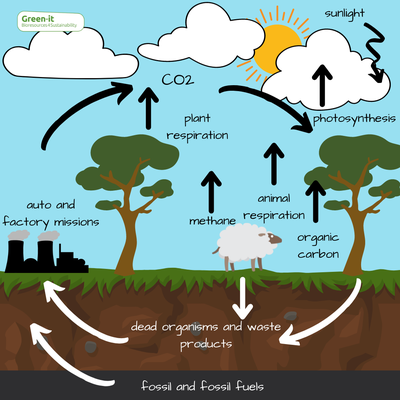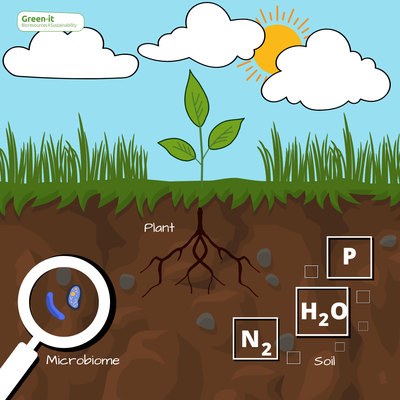Below the surface
It is easy to forget what we cannot see, but not wise. The ground hides many players that are fundamental to the stability and health of plant resources, either to acquire nutrients, resist stressful conditions or protect against pathogens. Underneath, numerous interactions occur constantly.
The carbon of it all
The main component of soil organic matter is carbon. It contributes to soil structure, fertility, biodiversity, and water-retention capacity. As such, the loss of organic carbon content can limit the soil’s ability to provide nutrients for sustainable plant production, a problem as temperatures rise.

Increased temperature promotes plant growth and, consequently, higher accumulation of carbon in the soil. However, it also enhances the rates of decomposition and mineralization of soil organic matter, as a result of higher microbial activity. This reduces soil organic carbon and increases CO2 emission to the atmosphere.
In this scenario, how do we counterbalance and strive for carbon neutrality?
Through sustainable agricultural practices. Especially the ones focused on conservation, no-tillage and reduced tillage, with temporary or permanent soil cover, and/or addition of organic matter as well as crop rotation.
Buried links
The soil is one of the most diverse microbial ecosystems in the world. It gathers a dynamic community of microorganisms - bacteria, archaea, fungi. Plant-microbe and soil systems are highly interconnected and essential to each other’s maintenance.
The mycorrhizal fungi colonize the roots of most plants. By exploiting a larger volume of soil than what roots alone can, these fungi allow the plant to increase its uptake of nutrients and water. In turn, the plants supply the necessary carbon for the mycorrhizal to survive.
The rhizobia are soil bacteria that colonize the root system of legumes. Their presence leads the plant to develop nodules in the roots to house them. These bacteria convert atmospheric dinitrogen into ammonia - a form usable by the plant - contributing to the process of biological nitrogen fixation.
There is a high variety of symbiotic processes established between soil microbiome and plants that allow them to better adapt to environmental changes. Close at hand, these microorganisms are an important potential natural resource.
By understanding their role and how they affect the ecosystem, it is possible to use them purposefully as biofertilizers. In cases of low fertility soils, they can be used in cover/pastures with legumes, using pre-selected and characterized rhizobia to raise nutrient contents. Similarly, upon stress conditions, these microorganisms can be recruited and used to stimulate plant growth and healthy agricultural soil.
Weighing in the soil
At GREEN-IT Research Unit, our researchers focus on sustainable agricultural practices that improve soil health. They work towards efficient use of nutrients and decreased nutrient loss, through the use of microorganisms as biofertilizers.
GREEN-IT researchers also look into plant-microbiome-soil interactions. The soil’s chemistry highly defines the microbe population available to plants. Healthy soils provide enough diversity that plants can select the microbiomes necessary to deal with environmental conditions. By researching the traits behind soil microbial diversity, the researchers look to comprehend the plant response to pathogenesis, salinity, drought, or lack of nutrients.
The soil is undoubtedly a key player in the fight against the climate crisis. From CO2 emissions to crop yield, its influence is vast, and it must go accounted for. As science and policies progress it is crucial to aim for the protection and recovery of this ecosystem.
| World Soil Day 2021 (5 Dec) aims to raise awareness of the importance of maintaining healthy ecosystems and human well-being by addressing the growing challenges in soil management, increasing soil awareness, and encouraging societies to improve soil health |
* Text made in collaboration with GREEN-IT members: INIAV researcher Corina Carranca and ITQB NOVA PI Juan Ignacio Vílchez


